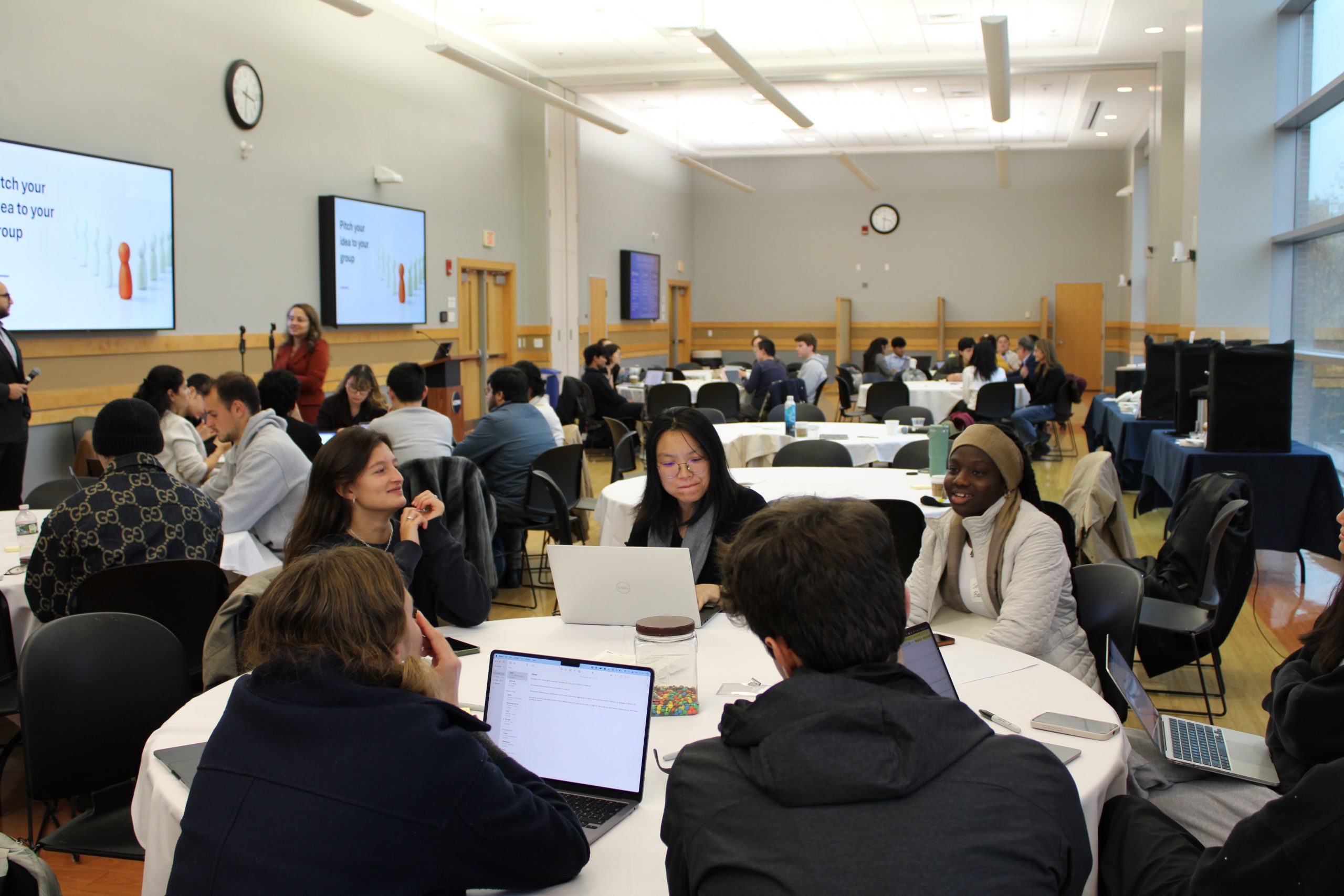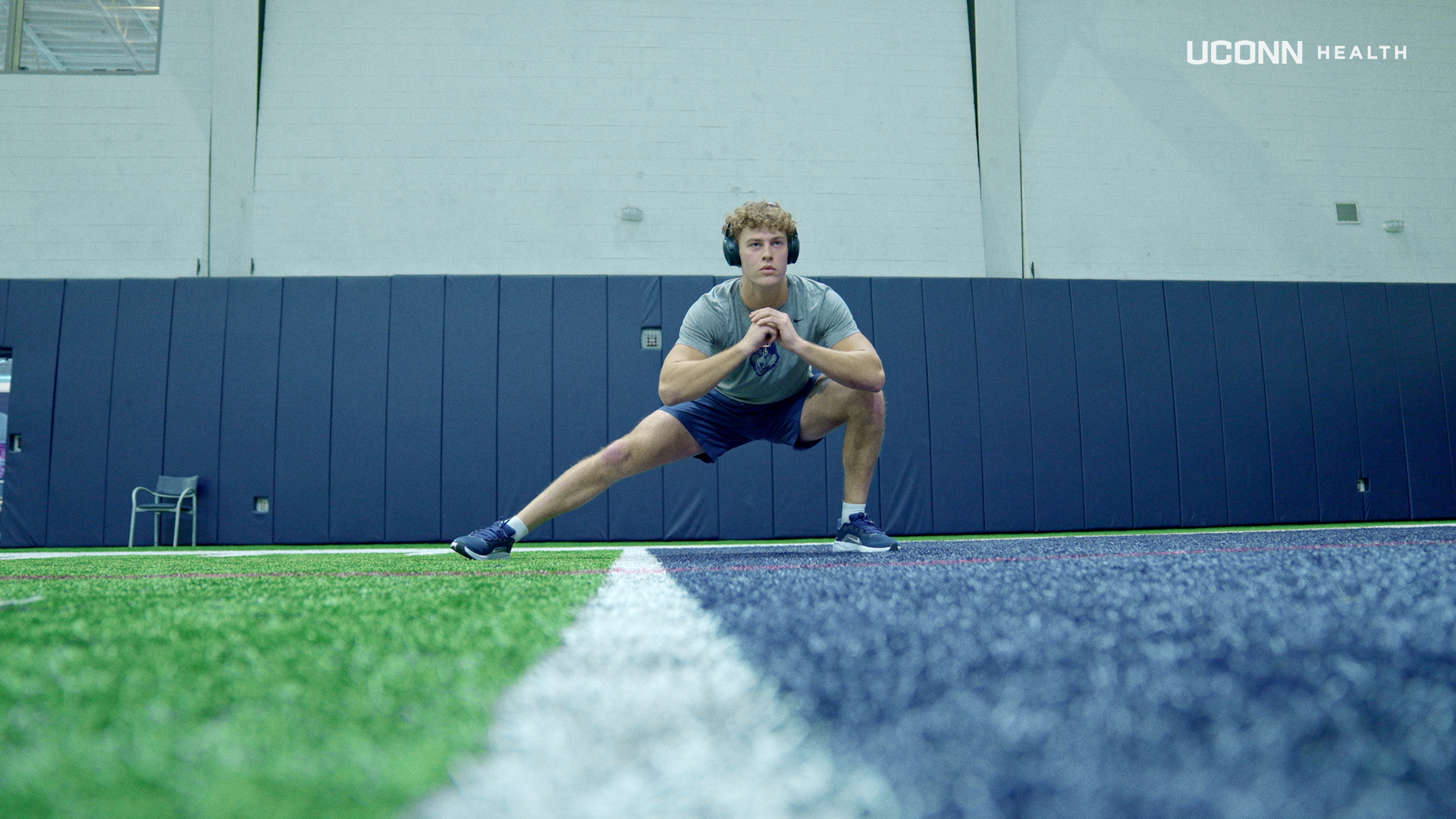
Jim Draper chose UConn despite his father’s wishes. His choice would change the University.
By Jeremy Teitelbaum, Dean
College of Liberal Arts and Sciences
Around St. Patrick’s Day, I joined a CLAS delegation on a drive out to the small western Connecticut town of Colebrook to visit Jim Draper, the college’s largest donor. That phrase – the college’s largest donor – might evoke a visit to a mansion, but in fact Jim lives in a white colonial-period house that is pretty unremarkable. Jim Draper may be generous, and successful, but he’s not much for show. Jim and his late wife Shirley endowed the Draper Chair in Early American History and have provided substantial support to the Institute for the Humanities, and our delegation consisted of Professor Bob Gross, holder of the Draper Chair, Professor Sherry Harris, director of the Institute for the Humanities, Frank Gifford, director of advancement for the college, and me. Our goal for this trip was to deliver a replica of the plaque identifying one of the big lecture halls in the CLAS building as the James L. and Shirley A. Draper Lecture Hall.
 At Jim’s house, we joined Jim’s brother, nephew, and great-nephew, as well as some of his closest friends, in a lunch of corned beef and cabbage. There was a definite air of celebration to the event, and, as often happens at family gatherings, the conversation turned to the past. I had the opportunity to hear directly about Jim and Shirley’s experiences at the University of Connecticut back in the late 30’s – they were Class of 1941 – and then about Jim’s life before that, as he and his brother, both in their 90’s, reminisced about their own father.
At Jim’s house, we joined Jim’s brother, nephew, and great-nephew, as well as some of his closest friends, in a lunch of corned beef and cabbage. There was a definite air of celebration to the event, and, as often happens at family gatherings, the conversation turned to the past. I had the opportunity to hear directly about Jim and Shirley’s experiences at the University of Connecticut back in the late 30’s – they were Class of 1941 – and then about Jim’s life before that, as he and his brother, both in their 90’s, reminisced about their own father.
Jim’s father was clearly a remarkable man, an engineer who worked in the oil business, and listening to Jim and his brother talk about him drove home to me how our parents are always with us, even long after their deaths. I was amazed to think that I was listening to detailed reminiscences about events that took place in the late 1930’s, events that were as present to these two men as if they had happened yesterday. I definitely had the feeling that both Jim and his brother Bob remembered their father as a pretty tough guy, and they would have some issues with him if he was still around.

One of the stories we heard concerned how Jim ended up a student at the University of Connecticut. As Jim told it, his father was a Yale man through-and-through, and made it pretty clear to Jim that Yale was the place to go. College didn’t appeal to Jim as he finished high school, so he worked various jobs and clearly drove his dad crazy. Jim explained how his father kept sweetening the deal if Jim would go to Yale, upping the amount of the tuition that he would cover, and even, in the end, offering Jim a car. But Jim, who grew up in New Haven, couldn’t imagine going to college in his home town. Finally, after a few years of this “encouragement,” his dad gave up on him, and Jim found himself lying on the beach contemplating his future. Suddenly he thought “What am I doing here?” At that point he went straight to the Dean at UConn and asked for admission – ignoring deadlines and without any of the credentials one normally needs to get into college. The Dean at the time found some old policy that granted admission by exam, and after Jim passed with flying colors, he was in. Not exactly a procedure we’d follow today, but considering the difference Jim has made to UConn, a wise decision by my distant predecessor!

One of the first, and most important, things to happen once Jim enrolled at UConn was that he met his wife Shirley during orientation. They were married in Storrs at a house now owned by an emeritus professor.
At UConn, Jim was president of his class, and his yearbook calls him the “personification of verbosity” and “always behind in his work, but always able to catch up.” Shirley’s yearbook entry calls her “Roller-upper of Q.P.’s” (whatever that means!) and “self deprecator.” It’s always fun to look back at such pictures and admire the black-and-white photos of guys in ties and women in dresses. College life back then can seem quaint. At the same time, while Jim and Shirley obviously had a lot of fun, they were in college when Hitler invaded Poland in 1939; the Battle of Britain took place during their sophomore year; and Jim graduated from college months before Pearl Harbor. It’s hard for me to picture college life in the shadow of those events, even though the United States is at war today, and for some of our students graduation means a commission and a trip to Afghanistan. As events turned out, Jim had a successful career in the military, serving in WWII and Korea. He was missing in action for close to a year during the Korean War, hiding behind enemy lines.
Jim retired as a colonel and went to work for a friend who owned some radio stations in Virginia. While Shirley worked as a high school teacher and guidance counselor, the radio business expanded into multiple cities, and Jim became a partner in a company that eventually owned 26 stations. As Jim tells it, he and Shirley always felt a debt to UConn and when they heard about the UConn 2000 project they stepped forward to see if they could help out. Dean Ross MacKinnon noticed Jim’s fascination with Early American History – the Draper house is filled with artifacts and books on the subject – and proposed the creation of the Draper Chair. Tragically, Shirley died in 2000 after a brief illness and did not have the opportunity to see the Draper contribution to the University come to full fruition.
It’s easy to dismiss as a cliche the notion that a gift brings joy to the giver as much as to the recipient, but all of us came away from our trip to Colebrook feeling like we’d been to a real celebration. Our presentation of a wall plaque had brought family and friends together to celebrate Jim and Shirley in an unmistakably genuine way. Even more, it was obvious from the love and respect that Jim commanded from everyone present that his impact on his community has gone far beyond his support for the University. Jim’s health isn’t great and he can’t see so well, but he still commands a room and he tells a great story. Far into the future, Jim and Shirley Draper’s name will live on through the Draper Chair in Early American History and the Draper Fellowships from the Humanities Institute. I’m honored that I will be able to put a face and a voice to that name.
Note: Just as this article was being prepared for publication on the web, we learned that Jim Draper passed away on May 4, 2010.
Comments? Send them to: dean@clas.uconn.edu
The College of Liberal Arts and Sciences has 23 departments in the sciences, humanities, and social sciences, ranging from physics to philosophy, and more than 15,000 students, 600 faculty, and 83,000 alumni. Check out our three initiatives: Health and Human Behavior, the Environment, and Culture and Society.
Other CLAS Blog posts:
A Step Closer to Science Fiction?
Academic Freedom Meets Freedom of Information
Ambition and Intrigue in the Court of Henry VIII
A Civil Conversation on Contentious Issues
Meditations on A(nother) Snow Day
Coming to Grips with Climate Change
Ideas — The Psychological Currency of the University
Will ‘Crowdsourcing’ Revolutionize Scholarship?
Citizenship, Marriage, and Mosques: Problems in the Applied Humanities
Of Deans and English Professors


